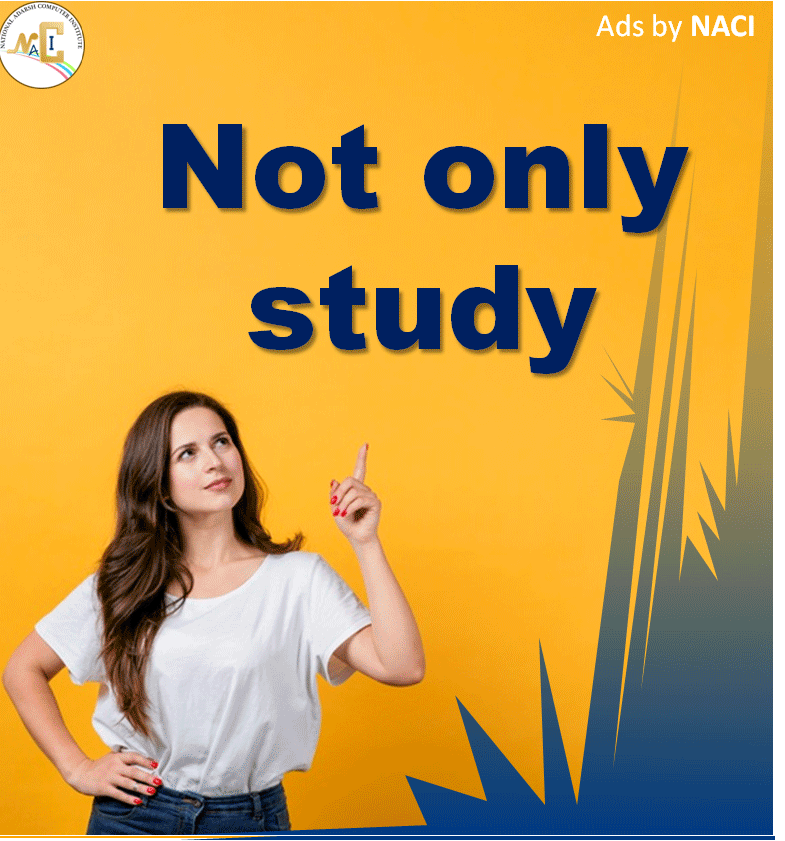Duration
1 year
Course Start
As per batch
Eligibility Criteria
10+2 / any diploma (Govt. recognized) of a minimum of 1 year duration After 10th Class / ITI Certificate (one year) after class 10, followed in each case, by one year relevant experience.
or
A pass in the NCVT-DP&CS (Data Preparation & Computer Software) Examination conducted by DGE&T (Govt. of India)
or
Any graduate from recognized University/Institute is eligible to register at ‘O’ level without any experience.
Job Opportunities
You will be eligible for some government exams where Computer diploma requirement, Major government exams are now demanding 'O' Level computer certification.
Some of the institutions/companies seek for DOEACC qualifiers. Some of the top-notch companies who regularly seek successful qualifiers are mentioned below:
UPSC
CRIS
Government Ministries
V.S.N.L.
CONCOR
Banking Services
ONGC
Shipping Corporation Of India
Railway Recruitment Board
HAL
Those who have completed this one year course can work in the following job profiles in reputed IT organizations .
EDP Assistant
Junior Programmer
Lab Demonstrator
Tech Support Executive
Web Designer
Basic areas in Bioinformatics and its application in IT field are included in Diploma course in Bioinformatics. After completing this course, one can work as Technical Assistants, Information Assistants or Assistant Programmers in various Pharmaceutical, Bio-fertilizer, Agricultural and Environment Engineering companies.
Diploma in Computer Hardware Maintenance course is intended for the candidates who are interested in the area of hardware maintenance. Leading hardware design companies like HCL Infosystems, Wipro Technologies etc. recruits diploma holders in computer hardware maintenance to following job profiles.
Syllabus
Module: M1-R5: IT Tools & Basics of Networks
Introduction to Computer

- Computer and Latest IT gadgets
- Evolution of Computers & its applications,
- IT gadgets and their applications
- Basics of Hardware and Software
- CentralProcessing Unit
- Input devices
- Output devices
- Computer Memory & storage
- Application Software
- Systems Software
- Utility Software
- Open source and Proprietary Software
- Mobile Apps.
Introduction to Operating System

- Operating System
- Basics of Operating system
- Operating Systems for Desktop and Laptop
- Operating Systems for Mobile Phone and Tablets
- User Interface for Desktop and Laptop
- Task Bar
- Icons & shortcuts
- Running an Application
- Operating System Simple Setting
- Using Mouse and Changing its Properties
- Changing System Date and Time
- Changing Display Properties,
- To Add or Remove Program and Features
- Adding, Removing & Sharing Printers
- File and Folder Management
- Types of file Extensions
Word Processing

- Word Processing Basics
- Opening Word Processing Package
- Title Bar
- Menu Bar
- Toolbars & Sidebar
- Creating a New Document
- Opening and Closing Documents
- Opening Documents
- Save and Save As
- Closing Document
- Using The Help
- Page Setup
- Page Layout
- Borders
- Watermark
- Print Preview
- Printing of Documents
- PDF file and Saving a Document as PDF file
- Text Creation and manipulation
- Document Creation
- Editing Text
- Text Selection
- Cut Copy and Paste
- Font, Color, Style and Size selection
- Alignment of Text
- Undo & Redo
- AutoCorrect
- Spelling & Grammar
- Find and Replace
- Formatting the Text
- Creating and using user defined Styles
- ParagraphIndentation
- Bullets and Numbering
- Change case
- Header & Footer
- Table Manipulation
- Insert & Draw Table
- Changing cell width and height
- Alignment of Text in cell
- Delete / Insertion of Row
- Column and Merging & Splitting of Cells
- Border and Shading
- Mail Merge
- Table of Contents
- Indexes
- Adding Comments
- Tracking changes
Spreadsheet

- Elements of Spread Sheet
- Creating of Spread Sheet
- Concept of Cell Address [Row and Column] and selecting a Cell
- Entering Data [text,number,date] in Cells
- Page Setup
- Printing of Sheet
- Saving Spreadsheet
- Opening and Closing
- Manipulation of Cells & Sheet
- Modifying / Editing Cell Content
- Formatting Cell (Font, Alignment, Style )
- Cut, Copy, Paste & Paste Special
- Changing Cell Height and Width
- Inserting and Deleting Rows
- Column
- AutoFill
- Sorting & Filtering
- Freezing panes
- Formulas
- Functions and Charts
- Using Formulas for Numbers (Addition, Subtraction, Multiplication & Division)
- AutoSum
- Functions (Sum, Count, MAX, MIN, AVERAGE)
- Sort
- Filter
- Advanced Filter
- Database Functions ( DSUM, DMIN, DMAX, DCOUNT, DCOUNTA)
- What-if Analysis
- Pivot table Charts (Bar, Column, Pie, Line).
Presentation

- Creation of Presentation,
- Creating a Presentation Using a Template
- Creating a Blank Presentation,
- Inserting & Editing Text on Slides
- Inserting and Deleting Slides in a Presentation
- Saving a Presentation
- Manipulating Slides
- Inserting Table
- Adding ClipArt Pictures
- Inserting Other Objects
- Resizing and Scaling an Object
- Creating & using Master Slide
- Presentation of Slides
- Choosing a Set Up for Presentation
- Running a Slide Show
- Transition and Slide Timings
- Automating a Slide Show
- Providing Aesthetics to Slides & Printing
- Enhancing Text Presentation
- Working with Color and Line Style
- Adding Movie and Sound
- Adding Headers
- Footers and Notes
- Printing Slides and Handouts
Introduction to Internet and WWW

- Basic of Computer Networks
- Local Area Network (LAN),
- Wide Area Network (WAN)
- Network Topology
- Internet, Concept of Internet & WWW
- Applications of Internet
- Website Address and URL
- Introduction to IP Address
- ISP and Role of ISP
- Internet Protocol
- Modes of Connecting Internet (HotSpot, Wifi, LAN Cable, BroadBand, USB Tethering)
- Identifying and uses of IP/MAC/IMEI of various devices
- Popular Web Browsers (Internet Explorer/Edge,Chrome, Mozilla Firefox, Opera etc.)
- Exploring the Internet ,Surfing the web
- Popular Search Engines
- Searching on Internet
- Downloading Web Pages
- Printing Web Pages
E-mail, Social Networking and e-Governance Services

- Structure of E-mail
- Using E-mails,
- Opening Email account
- Mailbox: Inbox and Outbox,
- Creating and Sending a new E-mail
- Replying to an E-mail message
- Forwarding an E-mail message
- Searching emails
- Attaching files with email
- Email Signature
- Social Networking & e-Commerce, Facebook, Twitter, Linkedin, Instagram, Instant Messaging (Whatsapp, Facebook Messenger, Telegram),
- Introduction to Blogs
- Basics of E-commerce,
- Netiquettes
- Overview of e-Governance Services like Railway Reservation, Passport, eHospital [ORS], Accessing e-Governance Services on Mobile Using “UMANG APP”, Digital Locker
Digital Financial Tools and Applications

- Digital Financial Tools
- Understanding OTP [One Time Password]and QR [Quick Response] Code
- UPI [Unified Payment Interface],
- AEPS [Aadhaar Enabled Payment System]
- USSD[Unstructured Supplementary Service Data]
- Card [Credit / Debit]
- eWallet, PoS [Point of Sale]
- Internet Banking
- National Electronic Fund Transfer (NEFT)
- Real Time Gross Settlement (RTGS)
- Immediate Payment Service (IMPS)
- Online Bill Payment
Overview of FutureSkills & Cyber Security

- Introduction to Internet of Things (IoT)
- Big Data Analytics,
- Cloud Computing
- Virtual Reality
- Artificial Intelligence
- Social & Mobile
- Blockchain Technology
- 3D Printing/ Additive Manufacturing
- Robotics Process Automation
- Cyber Security
- Need of Cyber Security
- Securing PC
- Securing Smart Phone
Module: M2-R5: Web Designing & Publishing
Introduction to Web Design

- Introduction of Internet
- WWW
- What is Website? How the Website Works?
- Web pages
- Front End,
- Back End
- Client and Server Scripting Languages
- Responsive Web Designing
- Types of Websites (Static and Dynamic Websites)
Editors

- Notepad,
- Downloading free Editors: Notepad++
- Sublime Text Editor
- Making use of Editors
- File creation and editing, saving
HTML

- Introduction, Basic Structure of HTML
- Head Section and Elements of Head Section
- Formatting Tags :Bold , Italic, Underline, Strikethrough
- Div,Pre Tag Anchor links and Named Anchors
- ImageTag
- Paragraphs
- Comments
- Tables : Attributes –(Border, Cellpadding, Cellspacing , height , width), TR, TH, TD, Rowspan, Colspan
- Lists : Ordered List , Unordered List , Definition List,
- Forms, Form Elements, Input types, Input Attriutes, Text Input Text Area, Dropdown, Radio buttons , Check boxes ,Submit and Reset Buttons
- Frames : Frameset , nested Frames
- HTML 5 Introduction
- HTML5 New Elements: Section , Nav, Article , Aside, Audio Tag, Video Tag,
- HTML5 Form Validations: Require Attribute, Pattern Attribute , Autofocus Attribute, email, number type, date type , Range type
CSS

- Introduction to CSS
- Types of CSS
- CSS Selectors : Universal Selector ,ID selector, Tag Selector, Class Selector, Sub Selector, Attribute Selector, Group Selector,
- CSS Properties : Back Ground properties , Block Properties , Box properties , List properties , Border Properties , Positioning Properties,
- CSS Lists CSS Tables,
- CSS Menu Design CSS Image Gallery
CSS Framework

- Web Site Development using W3.CSS Framework
- W3.CSS Intro
- W3.CSS Colors
- W3.CSS Containers
- W3.CSS Panels
- W3.CSSBorders
- W3.CSSFonts
- W3.CSS Text
- W3.CSS Tables
- W3.CSS List,
- W3.CSSImages
- W3.CSS Grid
Javscript and Angular Js

- Introduction to Client Side Scripting Language
- Variables in Java Script
- Operators in JS
- Conditions Statements
- JS Popup Boxes
- JS Events
- Basic Form Validations in JavaScript
Photo Editor

- Features of Photo Editing:
- Tools: Selection Tools, Paint Tools ,Transform Tools, Text Tool
- Layers, Brightness/ Contrast
- Improve Colors and tone, Filters
Web Publishing and Browsing

- Overview
- SGML
- Web hosting Basics
- HTML
- CGL
- Documents Interchange Standards
- Components of Web Publishing
- Document management
- Web Page Design Consideration and Principles
- Search and Meta Search Engines
- WWW
- Browser
- HTTP
- Publishing Tools
Module: M3-R5: Programming and Problem Solving though Python Language
Introduction to Programming

- The basic Model of computation,
- algorithms
- flowcharts
- Programming Languages
- compilation
- testing & Debugging and documentation
Algorithms and Flowcharts to Solve Problems

- Flow Chart Symbols
- Basic algorithms/flowcharts for sequential processing
- decision based processing and iterative processing.
- Some examples like: Exchanging values of two variables, summation of a set of numbers, Decimal Base to Binary Base conversion, Reversing digits of an integer, GCD (Greatest Common Division) of two numbers, Test whether a number is prime, factorial computation, Fibonacci sequence, Evaluate ‘sin x’ as sum of a series, Reverse order of elements of an array, Find largest number in an array, Print elements of upper triangular matrix, etc.
Introduction to Python

- Python Introduction
- Technical Strength of Python
- Introduction to Python Interpreter and program execution
- Using Comments, Literals, Constants
- Python’s Built-in Data types
- Numbers (Integers, Floats, Complex Numbers, Real, Sets)
- Strings (Slicing, Indexing, Concatenation, other operations on Strings),
- Accepting input from Console,
- printing statements
- Simple ‘Python’ programs
Operators, Expressions and Python Statements

- Assignment statement
- expressions
- Arithmetic, Relational, Logical, Bitwise operators and their precedence
- Conditional statements: if, if-else, if-elif-else
- simple programs
- Notion of iterative computation and control flow –range function
- While Statement
- For loop
- break statement
- Continue Statement
- Pass statement
- else
- assert
Sequence Data Types

- Lists, tuples and dictionary
- Slicing, Indexing, Concatenation, other operations on Sequence data type
- concept of mutability
- Examples to include finding the maximum, minimum, mean; linear search on list/tuple of numbers, and counting the frequency of elements in a list using a dictionary.
Functions

- Top-down approach of problem solving,
- Modular programming and functions
- Function parameters
- Local variables
- the Return statement
- DocStrings
- global statement
- Default argument values
- keyword arguments,
- VarArgs parameters
- Library function-input(), eval(),print(), String Functions: count(), find(), rfind(), capitalize(), title(), lower(), upper(), swapcase(), islower(), isupper(), istitle(),replace(), strip(), lstrip(), rstrip(), aplit(), partition(), join(), isspace(), isalpha(), isdigit(), isalnum(), startswith(), endswith(), encode(), decode(), String: Slicing, Membership, Pattern Matching, Numeric Functions: eval(), max(), min(), pow(), round(), int(), random(), ceil(), floor(), sqrt(), Date & Time Functions,
- Recursion
File Processing

- Concept of Files
- File opening in various modes and closing of a file
- Reading from a file
- Writing onto a file
- File functions-open(), close(), read(), readline(),readlines(),write(), writelines(),tell(),seek()
- Command Line arguments.
Scope and Modules

- Scope of objects and Names
- LEGB Rule
- Module Basics
- Module Files as Namespaces
- Import Model
- Reloading Modules
NumPy Basics

- Introduction to NumPy
- ndarray
- datatypes
- array attributes
- array creation routines
- Array From Existing Data
- Array From Numerical Ranges
- Indexing & Slicing
M4-R5: Introduction to Internet of Things(IoT) and its Applications
Introduction to Internet of Things – applications/devices, protocols, communication model

- Introduction - Overview of Internet of Things(IoT)
- the characteristics of devices and applications in IoT ecosystem
- building blocks of IoT, Various technologies making up IoT ecosystem
- IoT levels
- IoT design methodology
- The Physical Design/Logical Design of IoT
- Functional blocks of IoT and Communication Models
Things and Connections

- Working of Controlled Systems
- Real-time systems with feedback loop e.g. thermostat in refrigrator, AC, etc.
- Connectivity models – TCPIP versus OSI model
- different type of modes using wired and wireless methodology
- The process flow of an IoT application.
Sensors, Actuators and Microcontrollers

- Sensor - Measuring physical quantities in digital world e.g. light sensor, moisture sensor, temperature sensor, etc.
- Actuator – moving or controlling system e.g. DC motor, different type of actuators
- Controller – Role of microcontroller as gateway to interfacing sensors and actuators, microcontroller vs microprocessor, different type of microcontrollers in embedded ecosystem
Building IoT applications

- Introduction to Arduino IDE – writing code in sketch, compiling-debugging, uploading the file to Arduino board, role of serial monitor.
- Embedded ‘C’ Language basics - Variables and Identifiers, Built-in Data Types, Arithmetic operators and Expressions, Constants and Literals, assignment.
- Conditional Statements and Loops - Decision making using Relational Operators, Logical Connectives - conditions, if-else statement, Loops: while loop, do while, for loop, Nested loops, Infinite loops, Switch statement.
- Arrays – Declaring and manipulating single dimension arrays
- Functions - Standard Library of C functions in Arduino IDE, Prototype of a function: Formal parameter list, Return Type, Function call.
- Interfacing sensors – The working of digital versus analog pins in Arduino platform, interfacing LED, Button, Sensors-DHT, LDR, MQ135. Display the data on Liquid Crystal Display(LCD), interfacing keypad
- Serial communication – interfacing HC-05(Bluetooth module) Control/handle 220v AC supply – interfacing relay module.
Security and Future of IoT ecosystem

- Need of security in IoT - Why Security? Privacy for IoT enabled devices- IoT security for consumer devices- Security levels, protecting IoT devices
- Future IoT eco system - Need of power full core for building secure algorithms, Examples for new trends - AI, ML penetration to IoT
Soft skills-Personality Development

- Personality Development - Determinants of Personality- self-awareness, motivation, self-discipline, etc., building a positive personality, gestures.
- Self-esteem - self-efficacy, self-motivation, time management, stress management, Etiquettes & manners.
- Communication and writing skills- objective, attributes and categories of communication, Writing Skills – Resume, Letters, Report, Presentation, etc. Interview skills and body language.
PROJECT
DOEACC curriculum has a project as an important component of ‘O’ Level course. The Project is carried out by the student under guidance and support of faculty and management of the respective Institute / Organization. It is felt that such a project provides an opportunity to the student to apply his / her knowledge and skills to real life problems (including oral and written communication skills), and as such the project should be given utmost importance and priority both by the students as well as institution faculty / management in respect of its identification, planning and implementation.
The objective of the project is to give the students an additional hand-on experience in solving a real life problem by applying knowledge and skills gained on completion of theory papers in a course at a given Level. It provides an opportunity to students to develop written and communication skills. Project also helps the students to realize the importance of resource and time management, ownership of task towards deliverables, innovation and efficiency in task management apart from presentation skills. It also provides a good opportunity for students to build, enhance and sustain high levels of professional conduct and performance and evolves a problem solver frame of mind in the students. It is also felt that taking up the project by a student prepares him for a job in industry and elsewhere






































